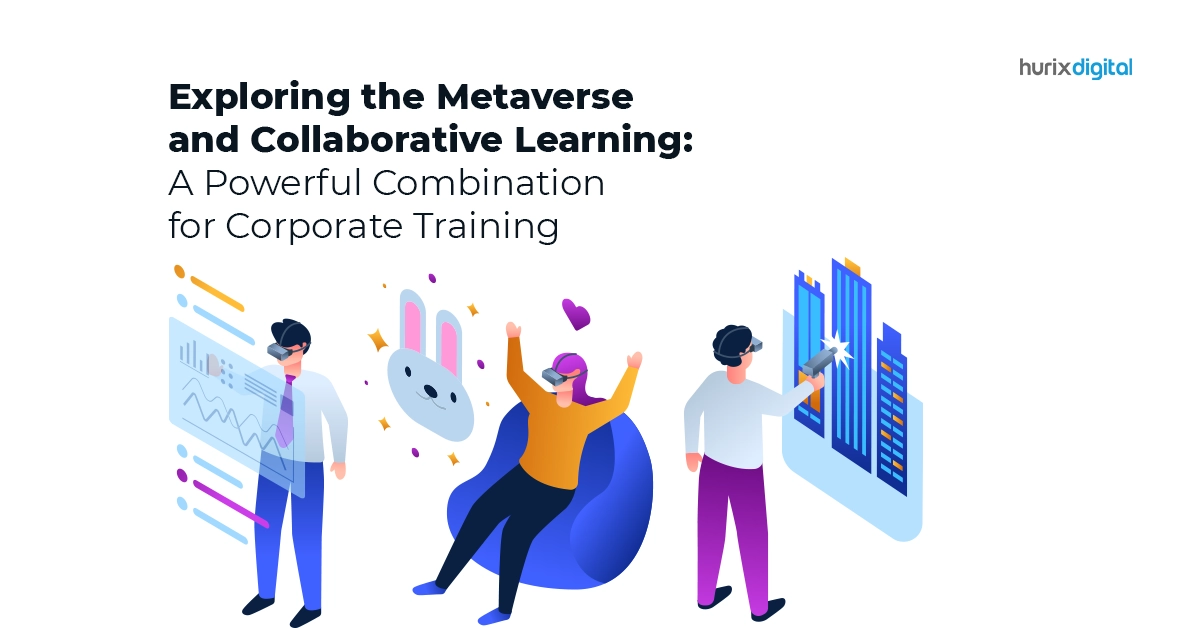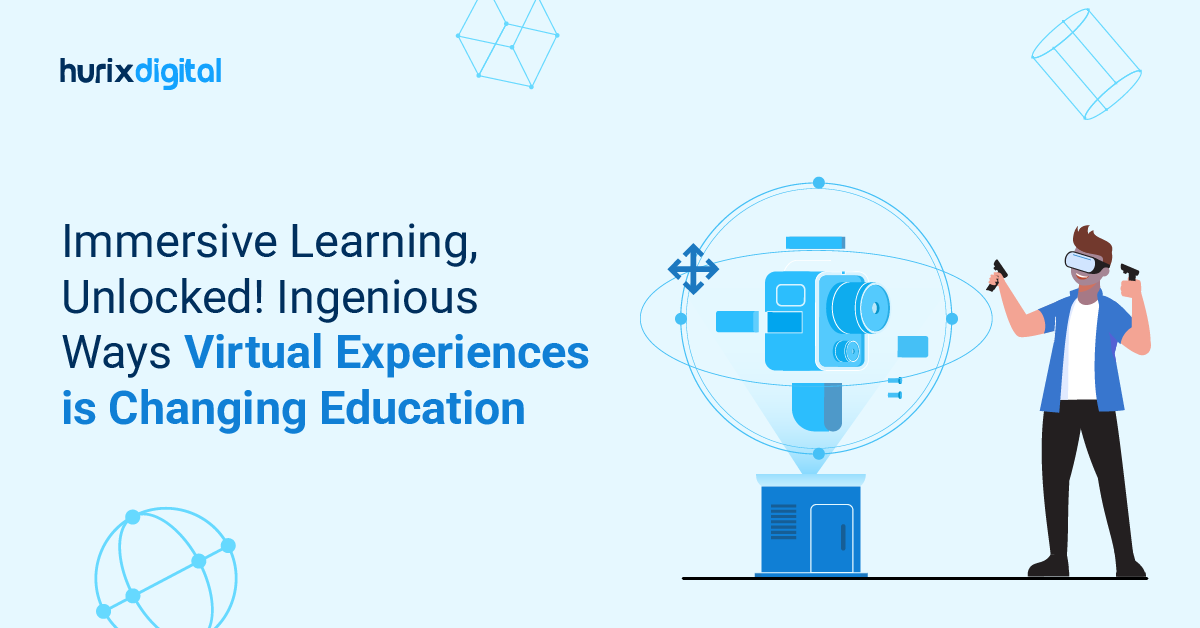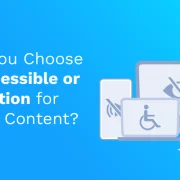
Exploring the Metaverse and Collaborative Learning: A Powerful Combination for Corporate Training
Summary
This article explores how the metaverse can enhance corporate training through collaborative learning. Discover the benefits of immersive virtual environments for workforce development.
When Mark Zuckerberg announced Facebook’s transition into Meta, the term ‘Metaverse’ made headlines across the globe, sparking both excitement and anticipation for its transformative potential in shaping digital interactions. The origin of this term traces back to Neal Stephenson’s sci-fi novel, “Snow Crash,” envisioning a realm where lifelike avatars interact with each other in realistic 3D landscapes and immersive Virtual Reality (VR) environments.
A study by Statista suggests that the global market for the Metaverse is expected to reach a value of $74.4 billion in 2024 before rising to $936.6 billion by 2030. In recent years, the Metaverse has been used to describe the evolving landscape of virtual and augmented reality (AR/VR) technologies, fostering immersive and engaging digital realms.
Put simply, the growing popularity of the Metaverse and collaborative learning have transformed the corporate training landscape. By combining these two concepts, companies can modernize their training methods, boost teamwork, and create better learning environments for their employees.
Table of Contents:
- Introducing Metaverse in Corporate Training
- How can the Metaverse and Collaborative Learning Benefit Corporate Training Programs?
- To Wrap Up
Introducing Metaverse in Corporate Training
The Metaverse represents a vast, interconnected virtual universe, transcending traditional boundaries and redefining collaborative learning. Incorporating the Metaverse in corporate training introduces immersive environments, enabling employees to engage, interact, and collaborate in simulated yet realistic settings. Such integration fosters active participation, enhancing retention, comprehension, and application of knowledge.
A Gartner study indicated that 25% of people will spend at least an hour per day in the Metaverse by 2026.
Furthermore, the shift towards collaborative learning platforms highlights the significance of peer interaction, knowledge sharing, and collective problem-solving. Moving away from traditional, instructor-centric methods, collaborative learning emphasizes inclusivity, diversity, and active engagement, aligning seamlessly with modern corporate training paradigms.
The future of corporate learning hinges on adaptability, scalability, and innovation. As organizations embrace digital transformation in training, the Metaverse emerges as a catalyst, facilitating personalized, interactive, and dynamic learning experiences.
In training programs, organizations can leverage virtual reality to replicate real-world scenarios, allowing employees to navigate challenges, refine skills, and build competencies within secure, controlled environments.
Also Read: Sales Training Program Checklist: 6 Essential Ingredients to Include
How can the Metaverse and Collaborative Learning Benefit Corporate Training Programs?
When it comes to corporate training programs, the integration of the Metaverse and collaborative learning can bring about several benefits, revolutionizing the way organizations educate and upskill their workforce.
Here’s a breakdown of how these technologies can enhance corporate training:
1. Enhanced Onboarding Experiences
Elevating the onboarding experience is a priority for many organizations aiming to support employee satisfaction, efficiency, retention, and overall productivity.
Adding the Metaverse to the onboarding process offers an excellent way to welcome new hires. It showcases the potential and opportunities within an organization, seamlessly embedding training into the onboarding process while keeping it engaging and interactive.
2. Revolutionizing Safety Training
For the construction industry, safety training often presents challenges in creating real-life scenarios without jeopardizing workers. The metaverse revolutionizes this by providing a safe yet realistic environment for training.
Also, workers can navigate complex scenarios virtually, honing their skills and confidence without actual risks, thereby ensuring a more prepared workforce when faced with real-life challenges.
3. Technical Skill Development
In-job skill enhancement is crucial for workforce development. However, budget constraints and limited resources can pose challenges.
The Metaverse holds the potential to simplify technical training through immersive experiences. It offers a virtual replica of the real world, enabling employees to acquire new skills efficiently, leading to enhanced proficiency in their respective roles.
4. Elevating Sales and Customer Service
Roles like sales and customer service demand adept communication and strategic thinking. However, it could be challenging if you’re a new hire or if you need more experience.
The Metaverse, with its interactive virtual technology, provides a dynamic platform for staff to refine their communication techniques and strategies in a risk-free virtual setting. This immersive approach fosters improved performance, organizational skills, and the ability to experiment with new methods before implementing them in real-world scenarios.
5. Hybrid Learning Initiatives
The Metaverse creates new avenues for hybrid learning environments, combining real-life experiences with guided virtual scenarios. This combination helps develop essential skills such as problem-solving, resilience, adaptability, and data analysis in a simulated yet authentic setting.
Moreover, the Metaverse’s forgiving nature allows learners to experiment, make mistakes, and learn from them without significant repercussions, fostering innovation, creativity, and continuous improvement.
6. Personalized Learning
Within the Metaverse, the ability to personalize training based on individual learning preferences is another key advantage. This tailored approach caters to diverse learning styles and requirements, enhancing the efficacy of corporate training.
For example, those inclined towards visual learning can immerse themselves in 3D models and enriched environments, whereas auditory learners can benefit from interactive lectures and audio-centric sessions. This flexibility of Metaverse training extends to accommodating varying skill levels, enabling adjustments based on each learner’s pace and understanding.
Similarly, collaborative learning within the Metaverse fosters personalized learning paths, allowing employees to consume content specific to their roles and responsibilities. By integrating the Metaverse with personalized learning capabilities, organizations can offer tailored training experiences, aligning with individual skill enhancement objectives and fostering professional growth.
Check Out EXCLUSIVE: Metaverse – the Future of Learning?
To Wrap Up
The future looks promising for those ready to immerse themselves in the Metaverse and collaborative learning.
Organizations poised to invest in these concepts position their workforce to excel in an era dominated by digital interconnectivity.
Furthermore, by integrating augmented reality in corporate training, companies can deliver tailored, interactive, and dynamic learning modules that foster skill development, retention, and application.
Partner with Hurix Digital to utilize the boundless opportunities of the metaverse and collaborative learning. We offer innovative digital solutions like gamified learning, simulation training, and learning solutions to elevate your learning and development initiatives.
Connect with us to know more!

Performance, Results, Growth, and Life-Long Learning define my professional life. I am passionate about making workplace learning planful, purposeful, and impactful. I take pride in partnering with clients and bringing them the best in learning design and creating solutions that address business challenges.







